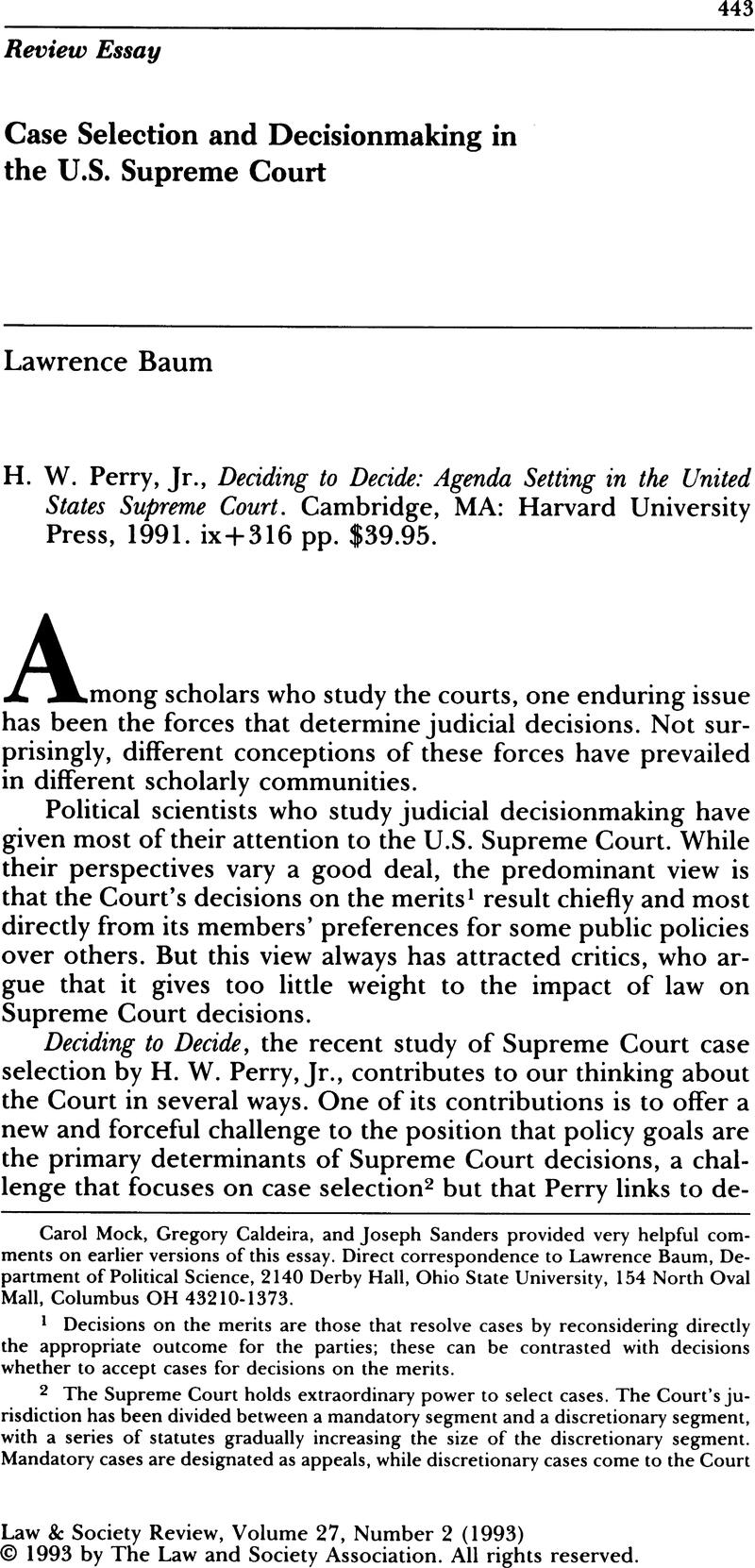Crossref Citations
This article has been cited by the following publications. This list is generated based on data provided by Crossref.
Baum, Lawrence
1994.
What Judges Want: Judges' Goals and Judicial Behavior.
Political Research Quarterly,
Vol. 47,
Issue. 3,
p.
749.
KENNEY, SALLY J.
2000.
Beyond Principals and Agents.
Comparative Political Studies,
Vol. 33,
Issue. 5,
p.
593.
Woo-young Rhee
2009.
The Size of the Plenary Docket of the Nation's Highest Court and Its Ramifications to the Court's Function: The Experience of the U.S. Supreme Court.
American Studies,
Vol. 32,
Issue. 1,
p.
199.
Dzmitryieva, Aryna
2017.
Case Selection in the Russian Constitutional Court: The Role of Legal Assistants.
Laws,
Vol. 6,
Issue. 3,
p.
12.



